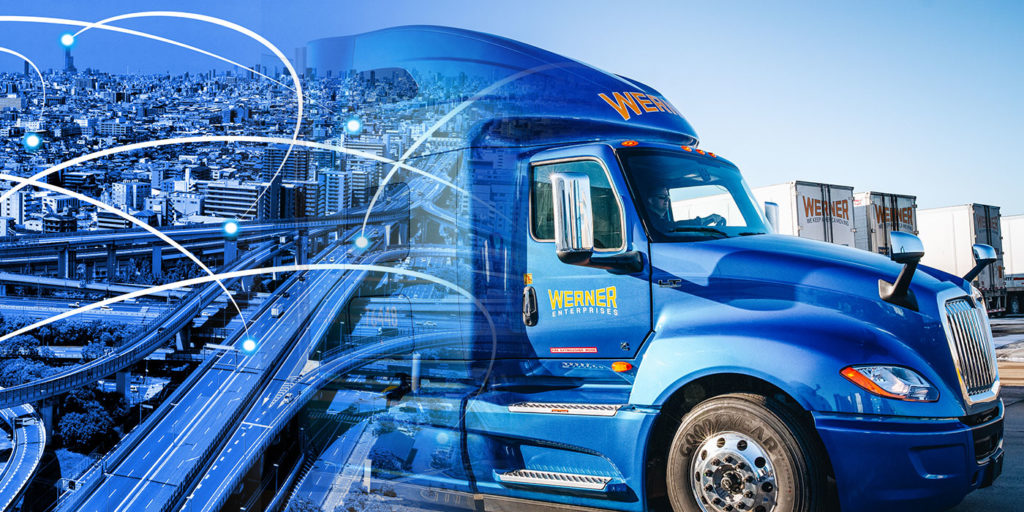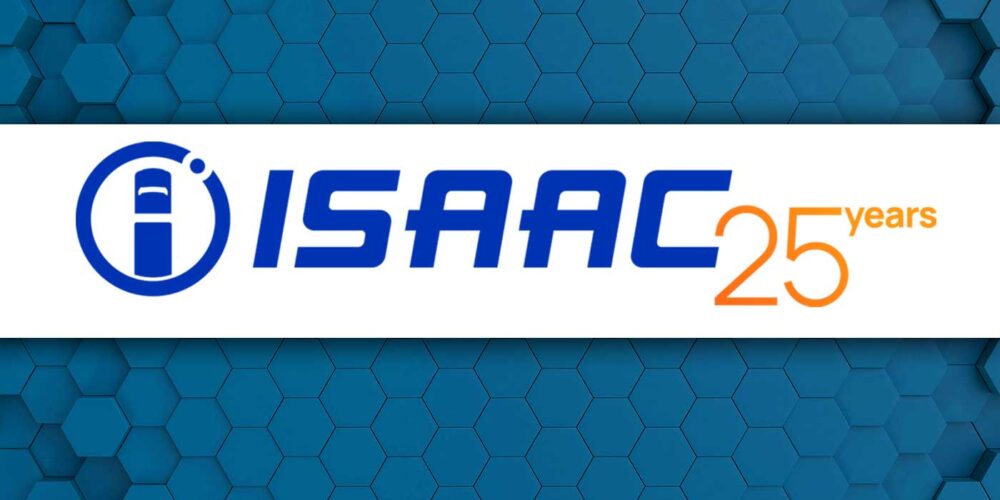I have to apologize. For too long I wrote about truck data integration in broad strokes as if it’s a magic technology button you press to connect data sets, dashboards, and, well, everything. Need a truck management solution? Clearly, the answer was data integration! Increase your visibility! It’s easy!
Update: it’s not easy.
The possibilities and capabilities are certainly there, but the execution of a truck data integration takes the right group of people coming together under the banner of a fleet’s needs. So the integration hand-waving stops now. I connected with Neil MacLeod, senior director of product at Werner Enterprises, for a behind-the-scenes look at how Werner has made integrations with OEMs and its own data solutions work.
First, a couple of things you need to know.
You’ll hear a lot of talk about APIs. It’s short for: “Application Programming Interface,” and it’s basically how two software systems talk and share data.
The other thing you need to know is that there is serious power in harnessing data the way your fleet specifically needs to reach your goals. For Werner’s part, continued development on its Event Resolution System, which includes Breakdown Management, has brought with it the ability to reduce the average dwell time to 25 minutes, a 58% improvement.
Take a moment: a 25-minute average dwell time. Seemingly unheard of in today’s supply chain strained world. So, let’s get to how MacLeod is doing it.
Fleet Equipment (FE): Talk with us about the data integration process. You have integrations with Navistar; you have one with Daimler Truck North America. Can you tell me about navigating integrations with different OEMs? What challenges did you see, and how did you overcome them?
MacLeod: Part of our cloud-first, cloud-now philosophy and approach is to ensure we’re doing as much as possible in terms of API integrations, in particular, with the OEMs. You need a mature enterprise with access to APIs and data flow between the organizations to do that.
We started with: What data points can we access via APIs, and then what can we leverage from that information?
It started with Navistar last spring. They made APIs available that we leveraged for our maintenance systems. We built a Breakdown Event Management tool on top of our Event Resolution System that allows us to reduce driver dwell time by consolidating multiple data streams into one dashboard then using APIs to share information with repair vendors and OEM’s. Historically, we would have to email or call someone with this information. API integrations allow us to share information seamlessly via our API suite.
FE: Can you go into detail on how this new flow of information works?
MacLeod: We have, at least, cut in half the amount of time that our drivers had to wait for a resolution to a breakdown. Typically, what happens in a service event is that they will reach a safe harbor, contact us to let us know that they’ve had an event, and we contact the local repair facilities and a tow, if needed.
We used to make phone calls and send emails asking what schedules looked like, how soon we could get a truck in for a specific repair, etc. – a very manual process. Now it’s essentially software as a service for our internal teams; a modern web-based application with a three- or four-screen workflow for the entire event. Behind those three or four screens are automated API calls to our vendor network telling us where to go, which direction, and which facility makes the most sense for a specific repair. It gives us the appropriate information at the right time to accelerate the process of reducing dwell time.
FE: Leveraging your own proprietary software is interesting. Several years ago, the industry trend for fleets across all sizes was leveraging third-party cloud offerings, taking advantage of “big data” and not having to develop their own solutions. You’re doubling down on your own software.
Sounds like it would make your drivers happy too.
MacLeod: One of our selling points to potential drivers is new technology in and outside the cab. We’ve invested a ton in our fleet. Another example is replacing all of the old tethered in-cab communication devices with new tablets that drivers can use inside and outside the cab. It allows them the freedom of doing DVIR inspection with the tablet in-hand and enables them to communicate outside of the truck. If they’re going to grab a bite to eat, they can grab the tablet and bring it with them to stay in touch with their transportation managers.
Fleet Equipment: That’s cool. Often, drivers are thought of as technology adverse and ready to push back on anything new, but you’re benefiting from a technology forward strategy.
We’ve tried to give drivers the capability to access and leverage tools wherever is most convenient for them. We’ve used a ton of feedback from them to prioritize our initiatives.
FE: How do your service network partners and vendors feel about the technology? Seems like a lot of its success could hinge on how much information they share. Do you have to educate your service partners on using the technology?
MacLeod: We worked directly with the dealers and our in-house staff. One of the people I work with is a product manager who came from the breakdown division within our organization. He knew exactly where the pain points were and had the relationships with all of his coworkers to help us try to eliminate a lot of those redundant phone calls and hold times for our agents and the vendor service writers.
We pass our dwell time savings directly onto our customers in how we developed the application. Taking the process from more than 10 different screens that people would have to navigate in our old system down to three or four came from working directly with our internal and external partners.
FE: That’s excellent because more and more, I’m finding that the trouble with technology isn’t the technology at all. It’s the people and getting them to actually use it.
MacLeod: I’ll tell you what: That’s exactly it. We shifted into a product-led organization, which means we’re doing a ton of research upfront. We map out every workflow and then sit down with our workforce and ask, ‘which steps can we eliminate together?’ That helps with adoption and buy-in for sure.













